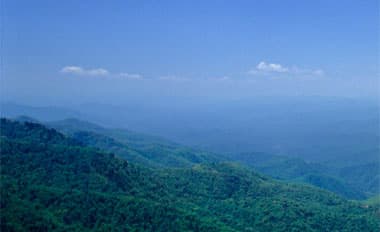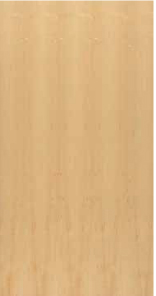Have We Spec’d the Correct Back?
- October 10, 2015
- •
- by Ang Schramm
When it comes to specifying the appearance of a decorative panel product, we quite naturally focus most of our energy into the selection of the species, grade, and limitations for the panel face. Depending on the application, we may choose a workhorse wood like hard maple for the face, then assign a grade from ANSI/HPVA HP-1-2009. Perhaps a “B” face works for our application without any additional restrictions. Or…maybe we want to spend a little time developing a somewhat custom face grade built on a “B” grade format for a consistent look for a cabinet manufacturer who intends to use a lot of these panels over the coming months. Because this particular panel will be used for end panels, door inserts, or even shelving, we then turn our attention to the grade and appearance of the back, and, for purposes of this illustration, we may determine that a #1 or # 2 back fills the bill, with all other requirements for the panel fitting the default mold set forth in the standard for a B-2 panel.
That all sounds pretty cut and dried, but what if the application will require a panel with an exposed face, but a back that will not be seen? Wall panels come to mind… Conventional practice has almost always been the kneejerk spec –a #4 back, known in the face and back segment of our industry as a reject back. Its appearance doesn’t really matter, right? It isn’t going to be seen, and it will serve to balance the panel, a necessity we have all learned through osmosis, right? Right?
Of course the preceding statements are correct within a narrow set of conditions! But a reject back is not a “one size fits all” solution to a “good one side” panel application. The problem is that a #4 back grade is the lowest of all face and back grades covered in the standard. It is replete with large open knots and long open splits that characteristically tend to develop a lot of loose wood and knotty material that can easily dislodge from the back and get pressed into the face of the panel below during the assembly phase of manufacturing. Additionally, wet adhesive will pass through the large openings in the back and smear onto the surface of the face in the panel below where it will effectively seal the surface of the face in directly under the opening. The effect of this phenomenon isn’t normally discovered until the panel has been fabricated and a finish is applied, whereupon it becomes a time consuming and difficult fix.
For the large volume, low price point panels prevalent in our industry, these problems are considered a cost of doing business and typically do not disrupt the end user’s production to the point of electing to pay more for a higher grade back. However, for highly spec’d panels, especially those with architectural specifications, the use of a #4 back can produce disastrous results. Where such specs exist for the face, careful consideration should be given to the specs for the back, as well. In any case, the back should be the same species as the face, and there should be no scrimping on grade. I always suggest at least a #1 back, but I can justify a standard “B” grade or even higher in some instances. In fact, to provide the closest balance possible where wall panels will be hung as specified by AWI utilizing “Z” clips and hanging rails to allow for normal in-service movement, the cut, grain direction, amount of heartwood and sapwood, and any other controllable variables should be as close to the same as possible from face to back.
In closing, there is and always will be a demand for decorative utility panels with a #4 back, but please remember the higher the grade of the face, the higher the grade should be for the back, even if it isn’t going to be seen!
Until next time!
Ang






